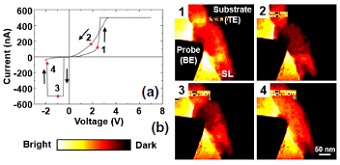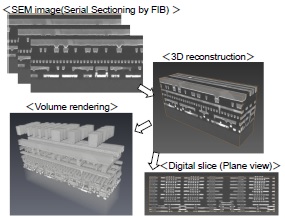Volume 61, Issue 12
Special Issue : Frontier in Nanoscale Three-Dimensional Analysis
Displaying 1-15 of 15 articles from this issue
- |<
- <
- 1
- >
- >|
Preface
-
Article type: Preface
2018 Volume 61 Issue 12 Pages 759
Published: December 10, 2018
Released on J-STAGE: December 10, 2018
Download PDF (334K)
Special Issue : Frontier in Nanoscale Three-Dimensional Analysis
-
 Article type: Overview
Article type: Overview
2018 Volume 61 Issue 12 Pages 760-765
Published: December 10, 2018
Released on J-STAGE: December 10, 2018
-
Article type: Current Topics
2018 Volume 61 Issue 12 Pages 766-771
Published: December 10, 2018
Released on J-STAGE: December 10, 2018
Download PDF (3077K) -
Article type: Current Topics
2018 Volume 61 Issue 12 Pages 772-777
Published: December 10, 2018
Released on J-STAGE: December 10, 2018
Download PDF (4300K) -
Article type: Current Topics
2018 Volume 61 Issue 12 Pages 778-783
Published: December 10, 2018
Released on J-STAGE: December 10, 2018
Download PDF (3119K) -
Article type: Current Topics
2018 Volume 61 Issue 12 Pages 784-789
Published: December 10, 2018
Released on J-STAGE: December 10, 2018
Download PDF (2784K) -
Article type: Current Topics
2018 Volume 61 Issue 12 Pages 790-796
Published: December 10, 2018
Released on J-STAGE: December 10, 2018
Download PDF (2304K)
Regular article
-
Article type: Regular article
2018 Volume 61 Issue 12 Pages 797-801
Published: December 10, 2018
Released on J-STAGE: December 10, 2018
Download PDF (1576K)
Planning Series
Surface Science and Vacuum Technology
-
Article type: Planning Series
2018 Volume 61 Issue 12 Pages 802-804
Published: December 10, 2018
Released on J-STAGE: December 10, 2018
Download PDF (1757K)
Report
Conference Reports
-
Article type: Report
2018 Volume 61 Issue 12 Pages 805
Published: December 10, 2018
Released on J-STAGE: December 10, 2018
Download PDF (533K) -
Article type: Report
2018 Volume 61 Issue 12 Pages 806
Published: December 10, 2018
Released on J-STAGE: December 10, 2018
Download PDF (300K) -
Article type: Report
2018 Volume 61 Issue 12 Pages 807-808
Published: December 10, 2018
Released on J-STAGE: December 10, 2018
Download PDF (331K)
Science Café
-
Article type: Science Café
2018 Volume 61 Issue 12 Pages 809-812
Published: December 10, 2018
Released on J-STAGE: December 10, 2018
Download PDF (1155K)
Research Abroad
-
Article type: Science Café
2018 Volume 61 Issue 12 Pages 813-814
Published: December 10, 2018
Released on J-STAGE: December 10, 2018
Download PDF (783K)
News & Trends
-
Article type: News & Trends
2018 Volume 61 Issue 12 Pages 815
Published: December 10, 2018
Released on J-STAGE: December 10, 2018
Download PDF (325K)
- |<
- <
- 1
- >
- >|







